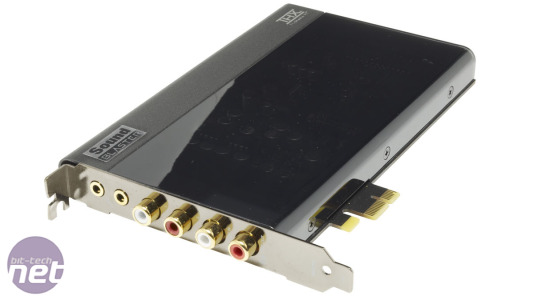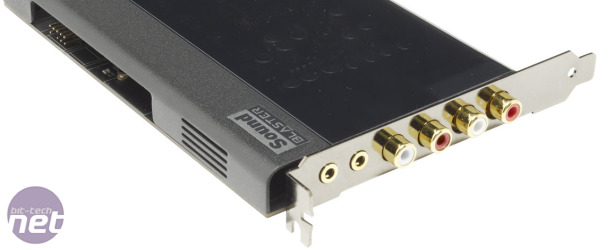
Creative Sound Blaster X-Fi Titanium HD Review
Manufacturer: CreativeUK price (as reviewed): £160.03 (inc VAT)
US price (as reviewed): $169.99 (ex tax)
Creative is pushing the new Sound Blaster X-Fi Titanium HD PCI-E sound card as ‘the audiophile’s choice.' For £160, you’d have to be serious about the quality of your PC audio to include the Titanium HD on your wishlist. It costs more than Asus’ Xonar Essence STX, which currently rules the roost when it comes to dedicated music cards.
The Titanium HD is the most expensive mainstream sound card you can buy that isn’t specifically designed for audio production, DJing or live performance.
Unlike most current sound cards, the Titanium HD is so specialised that you don’t even have the option of analogue surround sound. The back of the card is home to two pairs of stereo phono ports, one of which is an output while the other can serve as an analogue line input, or be reconfigured as an optical S/PDIF input and output. There’s also a dedicated headphone output and microphone input.
The card is built around Creative’s CA20K2 audio processor, which you’ll
also find in the X-Fi Titanium and Fatal1ty gaming sound cards. However, the rest of the card’s components are a step beyond its gaming-orientated siblings.
Meanwhile, the Digital-to-Analogue-Converter (DAC) is a Burr-Brown PCM 1794A, which is the sort of chip we’ve come to expect from high-end sound cards, AV receivers and amplifiers that target audio enthusiasts. The Analogue-to-Digital Converter (ADC) is a 4-channel Wolfson WM8775SEDS. As this isn’t an audio production card, the ADC is more likely to be handling voice input for Skype calls than recording the next great rock opera. However, it’s a popular choice for consumer-level sound cards and we have no complaints about the quality of its sampling.
Like Asus and Auzentech, Creative uses swappable operational amplifiers (op-amps), which means that serious audio geeks will be able to easily upgrade the card with their own preferred hardware. The op-amps drive and amplify the analogue sound that’s output to your headphones or speakers.
Realistically, few people are likely to swap out the National Semiconductor LME49710 single op-amps and JRC 2114D dual op-amps for different chips, but the option gives you the potential to tweak the sound to your own requirements. Creative has also used high-quality capacitors to ensure clear and consistent sound quality.
Specifications
- Processor Creative X-Fi CA20K2
- Memory None
- Interface PCI-E
- Maximum channels 2 (analogue), 6 (digital pass-through only)
- Bit-rate 24-bit
- Maximum sample rate 192KHz
- Inputs 3.5mm mic, stereo phono line, optical S/PDIF in
- Outputs 3.5mm headphone, stereo phono, optical S/PDIF out
- Audio technologies Dolby Digital Live, Dolby Digital EX, DTS-ES, DirectSound3D GX 2.5, EAX 2.0&1.0, DirectSound HW, DirectSound SW, A3D 1.0, OpenAL generic modes, 128 3D sounds processing capability (EAX5 software emulation), SoundFont, ASIO 2.0 driver support
- Extras 2 x optical S/PDIF lead, 1x dual phono (RCA) to 3.5mm stereo lead, PowerDVD

MSI MPG Velox 100R Chassis Review
October 14 2021 | 15:04










Want to comment? Please log in.